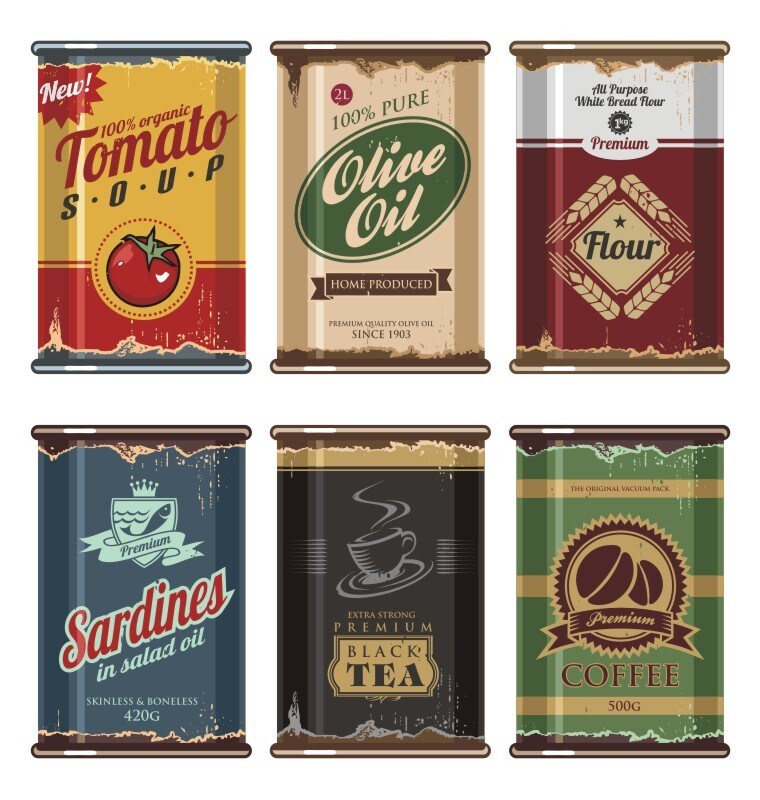 What you wrap your food product in is more than just a handy package for customers to carry around, and it’s more than just branding – food packaging can make or break your food safety measures.
What you wrap your food product in is more than just a handy package for customers to carry around, and it’s more than just branding – food packaging can make or break your food safety measures.
In addition to being a marketing canvas and consumer information billboard, food packaging is often a key player in food safety and protection. Certainly, it keeps the product from being damaged or contaminated by providing a protective environment while on display or in storage, but often it is more than just an inert component in the food processing chain. This is especially so where microbes are involved.
One of the earliest forms for protecting food by packaging is canning, using either glass jars or tins to preserve and store foods. The usual workflow employs a heating step once the food product is canned that renders the contents sterile and prolongs safe shelf life. By inactivating any existing microbial populations, canning should in theory stop spoilage by microbial growth. However, in the case of Clostridium botulinum for example, this isn’t quite so straightforward. Although heat and low pH inactivates the microbe itself, its spores are thermoresistant and can reactivate if a suitable environment develops within the sealed can. This includes incomplete processing during canning, where growth of other microbes can alter the pH to permit growth.
And this is true of several other common food contaminants such as Staphylococcus aureus; the microbes themselves might be heat-labile, their enzymes and toxins may resist the high temperatures required during the canning process and go on to spoil food or cause consumer ill health. Although the canning process renders the food safe to eat and protects it from contamination in storage, the isolated environment within the can itself can influence the microbial environment. This is especially true if the food was processed with a pre-existing bacterial load on board. For example, the low oxygen environment can selectively allow growth of certain spoilage organisms that were already in the food before canning.
This is also true for foods packaged using aseptic processing. This technique sterilizes the foods before packaging, with filling and package creation taking place in aseptic and sterile surroundings to prevent further contamination. Packaging for this process is lighter than that used in canning but still provides a protective air- and water-tight construction around the food. Pre-existing contaminants such as Alicyclobacillus species, which are heat-resistant thermophiles that cause spoilage in fruit juices, may only become apparent after processing when the food is stored at a higher temperature.
Food packaging can also modify bacterial growth on purpose, as an intended action. Modified atmosphere packaging (MAP) seeks to create an inert environment around foods that slows or inhibits microbial growth. Examples of this included vacuum packing, where all air is withdrawn from the interior, or introduction of a modified gaseous atmosphere that slows or prevents aerobic growth. In this way, the microbes that cause harm or spoilage are prevented from reaching significant levels within the product, thus extending shelf life and safety. For example, the use of high oxygen MAP is under test for reducing Campylobacter species growth rates in poultry products, thereby extending storage times for consumer safety.
However, producers should also appreciate that MAP does not necessarily mean safety where products are already contaminated; anaerobes such as C. botulinum can flourish in these conditions and facultative anaerobes such as Listeria monocytogenes have already proved that attention to pre-packaging hygiene is imperative.
Food packaging itself can also play a more active role in modifying the microbial environment using additives that scavenge oxygen or carbon dioxide, for example. The material itself may also absorb water to keep foods too dry for microbial action. In order to advance and develop such active roles for this seemingly inert barrier, it is important that food producers know as much as possible about the products they handle. Creating suitable active packaging requires a thorough knowledge of the product and the way it deteriorates with time and storage.
Producers must also appreciate that any change in the formulation of the product can also affect the way that packaging interacts with the microbial environment even if the processing itself does not change. It is indeed a sobering thought that the largest outbreak of botulism in the United Kingdom was caused by switching a product ingredient formulation from sugar to an artificial sweetener. This change altered water activity, which in combination with insufficient heat processing allowed growth of the microbe and its toxin to levels harmful to consumers.
Learn about testing food products for foodborne pathogens or read more about food packaging and safety on Examining Food
Reference
Betts, R. Food (2015) “Microbial Update – Food Packaging“, International Food Hygiene 25 (2)
O’Mahony, M. et al. (1990) “An Outbreak of Foodborne Botulism Associated with Contaminated Hazelnut Yoghurt.” Epidemiology and Infection 104.3 : 389–395.




Leave a Reply